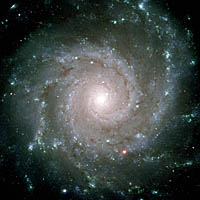For Families
Here you can find some material to help inspire you to develop your astronomical interest and knowledge.
Light Pollution Survey
How dark are the skies where you live? You can find out, and then compare where you live with other places in the world with the Globe at Night. The Globe at Night will explain how to judge light pollution by finding the constellation Orion, and counting the stars in it. The darker your sky, the more stars you'll be able to see.
Once a year, they select two weeks (normally in spring) when you can record your star-count on the website and add it to the global bank of statistics.
Things Are Looking Up
We have a PDF version of a booklet written as a guide to astronomy for beginners. It guides the reader through everything from what to wear, finding the north-star, recognising constellations, to astro-photography and running your own star-party. It even has a set of simplified star-charts at the end; a very helpful way to come to grips with the sky.
Things Are Looking Up Booklet [PDF/3.15 MB]
Star Umbrella Activity
This is a fun activity for younger children and the young-at-heart. The sheet shows the relative positions of the northern stars, on the outline of an umbrella. If you have a plain umbrella, a few sticky stars (obtainable from any stationer) and a bit of patience, you can create your very own fold-up planetarium of the northern sky. Spin the handle (anti-clockwise) and reproduce the apparent motion of the night sky round the Pole Star.
Star Umbrella Activity Sheet [PDF/704 KB]
Choosing an Instrument
Lots of people ask us which telescope to buy, but for many beginners, the answer is not to buy a telescope at all; binoculars can be far more useful to the amateur until they are comfortable with finding their way round the sky. A very useful introduction was written by Steve Tidey, and you can read it following the link below.
